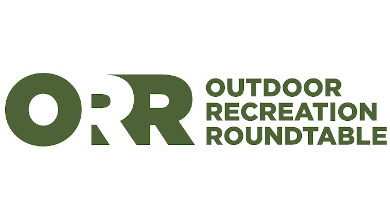A new survey from the Outdoor Recreation Roundtable (ORR), in partnership with the Oregon State University Outdoor Recreation Economy Initiative, looked at the effects of the COVID-19 pandemic from almost two seasons ago to where things are today.
According to ORR, the new data acquired in the August survey paints a picture of a resurgence within many sectors of the industry. Some areas report record-high sales, and more new and younger consumers are prioritizing time and resources to pursuing outdoor activities. But while the trend is heading in the right direction, ORR said it has not been universal across the industry and more support is needed, as many outdoor recreation businesses are still suffering and in danger of permanent closure.
“According to the US Census Bureau, outdoor recreation was the second most impacted industry this year due to the COVID-19 pandemic, next to food and accommodation,” said Lindsey Davis, vice president of ORR. “The industry experienced a double-whammy impact due to both the pandemic-related closures that slowed entire supply chains, retail, manufacturing and services, and the closures of state and federal parks, marinas, trails, docks and more on our public lands.”
According to a review of previous responses and ORR’s most recent survey responses of the 23 participating national outdoor recreation trade associations, representing more than 25,000 businesses with nearly 2.5 million employees, the numbers show how hard the industry was initially impacted and how things have started to trend better for a lot of the industry:
Combined Results: (The below statistics represent a change of year-over-year)
Production / distribution:
April: Of the businesses this survey represents, 89 percent are experiencing difficulty with production and distribution, with 68 percent experiencing significant impacts.
May: Of the businesses this survey represents, 100 percent are experiencing difficulty with production and distribution, with 79 percent experiencing significant impacts.
August: Of the businesses this survey represents, 91 percent are experiencing difficulty with production and distribution, with 48 percent experiencing significant impacts.
Business Revenue:
April: Eighty-nine percent of outdoor industry businesses are experiencing a decrease in sales, with 39 percent seeing a decrease of 50 to 75 percent or greater.
May: Ninety-four percent of outdoor industry businesses are experiencing a decrease in sales, with 24 percent seeing a decrease of 50 to 75 percent or greater.
August: 65 percent of outdoor industry businesses are experiencing a decrease in sales, with 17 percent seeing a decrease of 50 to 75 percent or greater. Twenty-two percent of businesses are reporting an increase compared to one year ago.
Trade Association Revenue:
April: Eighty percent of outdoor industry trade associations are seeing a decrease in revenue, with 30 percent seeing a decrease of 50 to 75 percent or greater.
May: Ninety-five percent of outdoor industry trade associations are seeing a decrease in revenue, with 26 percent seeing a decrease of 50 to 75 percent or greater.
August: Seventy percent of outdoor industry trade associations are seeing a decrease in revenue, with 13 percent seeing a decrease of 50 to 75 percent or greater. Nine percent of trade associations are reporting an increase compared to one year ago.
Business Employment:
April: Seventy-nine percent of these businesses have laid off or furloughed a portion of their workforce, with 11 percent closing, or laying off most of or all staff.
May: Eighty-eight percent of these businesses have laid off or furloughed a portion of their workforce, with 8 percent closing or laying off most or all of staff.
August: Forty-seven percent of these businesses have laid off or furloughed a portion of their workforce. Thirty-six percent of businesses are reporting they are hiring, and more employees are needed.
“We hope that the trends we are seeing now in outdoor recreation continue, and that some of the issues our members and businesses still face are quickly addressed by policy makers,” said Jessica Turner, ORR’s executive director. “It has become widely known that recreation is a huge economic driver and with more smart investments like the recently passed Great American Outdoors Act, such as a Recreation Package, this industry will be a key player in economic recovery and a solution to other issues facing the nation such as unemployment, rural development, equity in outdoor access and mental and physical health.”
This is the third time ORR has surveyed its member trade associations, which represent more than 110,000 RVing, camping, boating, fishing, powersports, horseback, hunting, skiing, hiking, biking businesses and more, about the impacts their member companies have experienced since the pandemic began.
